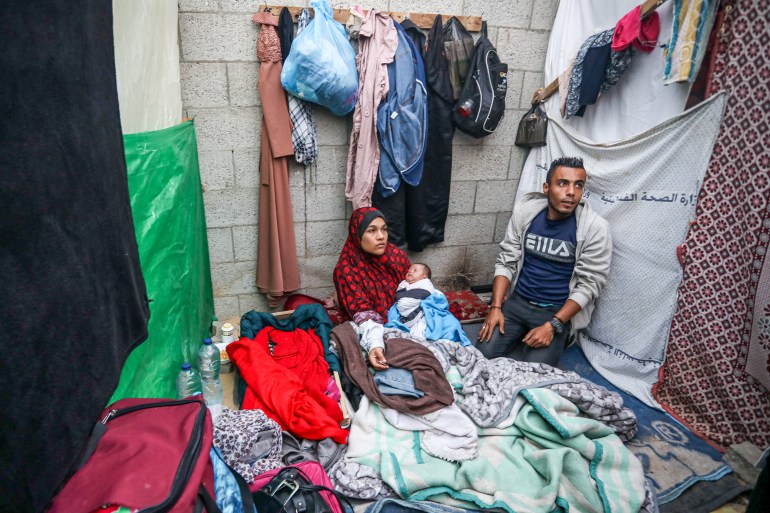Staying warm in Gaza: A battle for survival

Palestinians in the Gaza Strip share the challenges brought on by the cold, rainy season, and how they are surviving.
Esraa Kamal al-Jamalan was nearly eight months pregnant when she, her husband and their five-year-old son were forced to flee their northern Gaza neighbourhood of Sheikh Radwan after it was bombed by Israel in late October. They walked more than three kilometres (1.86 miles) to al-Shifa Hospital, where many people were sheltering, taking with them only a few lightweight T-shirts and trousers as they expected to soon return home.
Two months later, 28-year-old Esraa and her family are living in one of the hundreds of makeshift tents in Deir el-Balah in central Gaza with no means of protecting her newborn from the harsh winter — cold temperatures combined with rains. “When it first started raining here, I hadn’t given birth yet. Me and my husband were trying to find shelter from the rain, as the water kept seeping through here and there in the tent,” Esraa said, sitting with her daughter in her lap, her skin pale and yellow. “We’ve been through rough days. We have never seen something like this before.”

Being unhoused in rough weather conditions and without warm clothing and blankets, the couple are struggling to keep their newborn daughter warm inside their tent. They cannot take her outside either, close to the fires that people are burning for warmth as the smoke gives her breathing difficulties.
“The other day, she kept coughing [from wood smoke] until she turned blue. We were terrified she could have died,” Esraa explained, her voice shaking. “I am worried the most about my daughter. She hasn’t even gotten vaccinated yet.”
As Israel’s assault on Gaza enters its 12th week, Al Jazeera spoke to Palestinians in the Gaza Strip about the challenges brought on by the arrival of winter for the nearly two million people internally displaced in the enclave.



